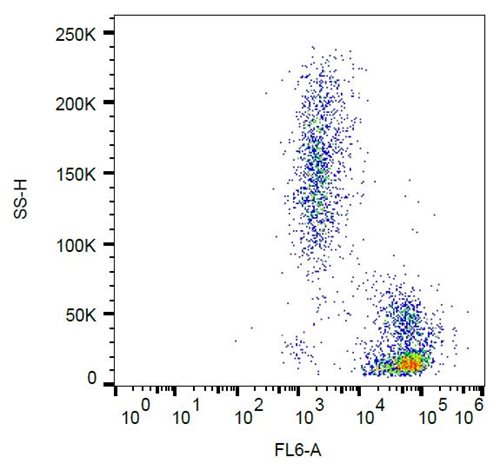Anti-CD3 Monoclonal Antibody (Clone:MEM-92)-Low Endotoxin
Shipping Info:
For estimated delivery dates, please contact us at [email protected]
| Format : | Low Endotoxin |
| Amount : | 0.1 mg |
| Isotype : | Mouse IgM |
| Purification : | Purified by precipitation and chromatography |
| Storage condition : | Store at 2-8°C. Do not freeze. |
CD3 complex is crucial in transducing antigen-recognition signals into the cytoplasm of T cells and in regulating the cell surface expression of the TCR complex. T-cell activation through the antigen receptor (TCR) involves the cytoplasmic tails of the CD3 subunits CD3 gamma, CD3 delta, CD3 epsilon and CD3 zeta. These CD3 subunits are structurally related members of the immunoglobulins super family encoded by closely linked genes on human chromosome 11. The CD3 components have long cytoplasmic tails that associate with cytoplasmic signal transduction molecules. This association is mediated at least in part by a double tyrosine-based motif present in a single copy in the CD3 subunits. CD3 may play a role in TCR-induced growth arrest, cell survival and proliferation. The CD3 antigen is present on 68-82% of normal peripheral blood lymphocytes, 65-85% of thymocytes and Purkinje cells in the cerebellum. It is never expressed on B or NK cells. Decreased percentages of T lymphocytes may be observed in some autoimmune diseases.
Flow Cytometry Recommended dilution:2-10 µg/ml
Immunoprecipitation Functional Application The antibody MEM-92 in solution induces early responses of T cell activation (tyrosine phosphorylation, calcium elevation, Erk activation and expression of activation antigens), but it is unable to induce T cell proliferation.
For Research Use Only. Not for use in diagnostic/therapeutics procedures.
| Subcellular location: | Cell membrane |
| Post transnational modification: | Phosphorylated on Tyr residues after T-cell receptor triggering by LCK in association with CD4/CD8. |
| BioGrid: | 107354. 25 interactions. |
|
There are currently no product reviews
|





















.png)









